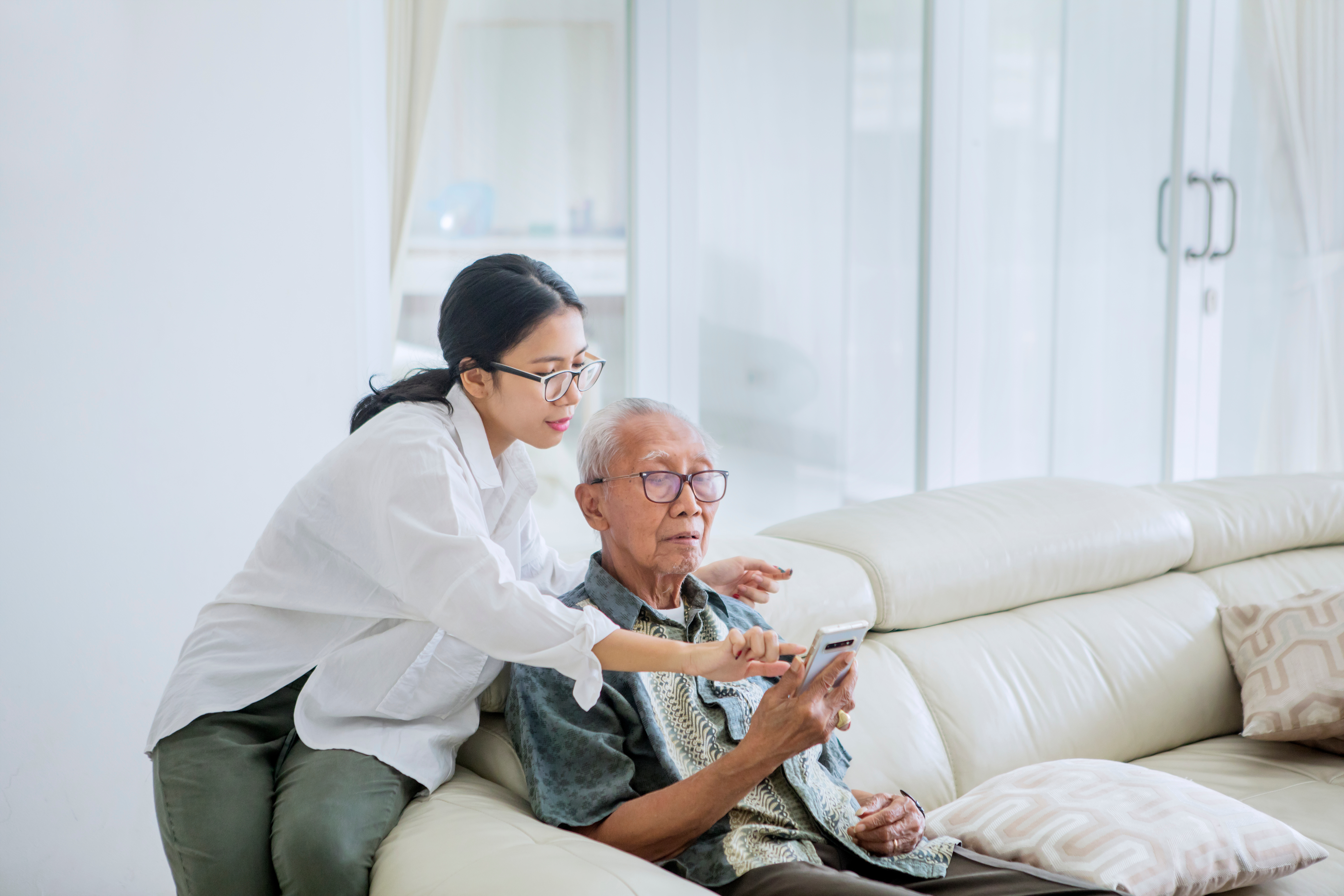Creating a dementia-friendly environment

Modifying a living space for the person with dementia can deliver huge dividends for their safety and comfort.
A home environment that respects the special needs of someone with dementia goes hand-in-hand with person-centered dementia care. Just remember two words: safety and simplicity. Safety precautions guard against the higher risk of injury dementia brings, while simpler surroundings can go a long way toward easing the overstimulation that can cause someone with dementia to appear confused. Here’s a deeper look at these two elements of a dementia-friendly environment.
Promoting safety
People with dementia have increased difficulty interpreting visual cues and are more distracted, raising their risk of falling. Take these safety precautions to help prevent falls and other avoidable accidents that could injure your loved one and result in an emergency room visit or hospitalization:
Clear floors of tripping hazards, like scatter rugs and throw rugs. Keep electrical cords out of the way or tacked to baseboards.
Remove or hide any potentially hazardous items, like kitchen knives, lighters, and matches. Keep any firearms under lock and key.
Keep medications in a locked cabinet.
Put night lights in the bedroom, hallway, and bathroom.
Outfit the bathroom with rubber bath mats and grab bars.
Cover electric outlets with childproof plugs.
Label floor vents, radiators, and other heating elements with colored tape to deter your loved one from contacting them when hot. Remove space heaters.
Make sure all stairs have handrails, ideally extending beyond the first and last step.
Carpet stairs or apply grip material to the steps.
Use textured strips on hardwood and tile floors to prevent slipping.
Guarding against getting lost. People with dementia don’t always wander off deliberately. They can lose their way on a walk or simply going to the mailbox. If your loved one is at risk, let your neighbors know and ask them to keep an eye out. Also consider having your loved one wear a mobile personal emergency response (PERs) device, which can alert you to their whereabouts.
To learn which of the above safety steps you should take, do a walk-through of your loved one’s living space to spot any potential hazards or concerns. You might also consider asking a local visiting nurse agency to conduct a home safety assessment. Either way, the more you can anticipate and address, the safer your loved one will be.
Simplifying the living space
Your loved one may be easily stressed by noise and clutter. Background noise can cause disorientation and agitation, and clutter can cause confusion and make spaces hard to navigate. Reducing stimulation such as excess noise and clutter can help your loved one focus their attention on what is meaningful. Try these strategies:
Clear and avoid clutter in all its forms, like piles of newspapers, and magazines. Keep hallways and other traffic areas free from furniture and other obstacles.
Reduce or eliminate noises. For windows, try sound-blocking cellular blinds and noise-absorbing curtains. Make at least one main room a TV-free zone.
Avoid total silence, which can be disorienting for people with dementia. Have soft music or a radio station with gentle talking playing in the background.
Make it easier for your loved one to find and use the items they need. In the bathroom, leave out everyday items like the toothpaste and toothbrush as visual cues on how to complete the task. In the bedroom, remove out-of-season clothing from closets and leave only what your loved one will wear.
Avoid busy patterns in curtains, towels, and napkins since clashing patterns can agitate your loved one. For floors, choose light solid-color area rugs and mats.
Try to illuminate areas with natural light, which can help your loved one see things more clearly. In places where natural light isn’t possible, use table or task lamps with soft glows rather than harsh overhead light.
Throughout the living space, surround your loved one with familiar objects, like family photos, souvenirs from memorable trips, and items with special meaning, like a stuffed doll from childhood. Play their favorite radio station in the background. The familiar can be comforting and help your loved one feel more themselves.
A dementia-friendly environment can help your loved one thrive
Not only can safety and simplicity help your loved one feel more secure and less frustrated, a friendlier environment encourages a sense of independence. That’s an important benefit given that loss of independence is something people with dementia fear most. The more your loved can continue to do for themselves, the better they can maintain their sense of self — an important goal of person-centered care.
Access our full guide to dementia care
Find more tips, information, and resources with our full-length guide to dementia care.





